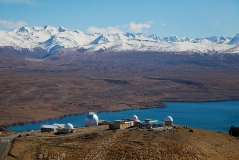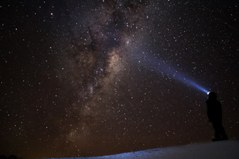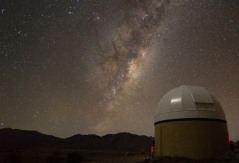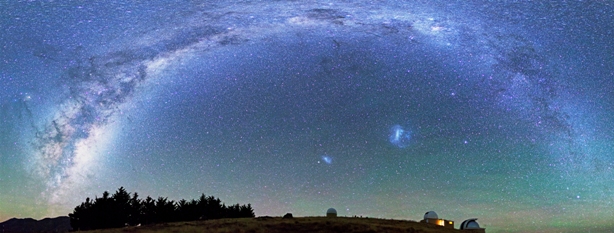

- Home
- The North Island of NZ
- Far North, Cape Reinga & Ninety Mile Beach
- Hokianga & the Kauri Coast.
- Kerikeri
- Bay of Islands
- Paihia
- Russell
- Tutukaka
- Whangarei
- Auckland
- Waiheke Island
- Coromandel
- Hamilton – Waikato
- Raglan
- Waitomo
- Tauranga & Whakatane
- Gisborne
- Rotorua
- Lake Taupo
- Ruapehu
- Napier, Hawkes Bay
- Whanganui
- Wairarapa
- Wellington
- The South Island of NZ
- Picton, Marlborough Sounds
- Blenheim
- Havelock & Pelorus Sound
- Nelson Tasman
- Murchison
- West Coast
- Okarito
- Franz Josef
- Haast West Coast
- Kaikoura
- Hanmer Springs
- Christchurch
- Methven
- Akaroa & Banks Peninsula
- Lake Tekapo
- Mount Cook
- Lake Wanaka
- Arrowtown
- Queenstown
- Queenstown Activities
- Queenstown/Milford
- Queenstown Scenic Flights
- Glenorchy
- Te Anau
- Manapouri
- Milford Sound
- Southland & The Catlins
- Stewart Island
- Dunedin
- Oamaru
- NZ Travel Interests
- Accommodation
- Contact Us
Southern lights in Lake Tekapo, New Zealand Aurora Australis
Best Place To See The Southern Lights in New Zealand
A mesmerising swirl of vibrant green and pink lights, the Aurora Australis is harder to catch than its northern counterpart. Winter months promise more regular occurrences, but if you’re lucky you could witness the stunning display of solar wind reacting with natural gases any time of the year from the Aoraki Mackenzie International Dark Sky Reserve, a 3-hour drive south-west from Christchurch on the South Island of New Zealand.
Aspiring photographers, adventure seekers or hopeless romantics you’re in luck. We’ve found the best location offering you a chance of seeing the Southern Lights in New Zealand
Must Do New Zealand
Our helpful website is designed to showcase New Zealand’s top activities. Whether you’re a local or visitor, there’s helpful advice on getting the most out of your holiday, including where to see the Southern Lights. Be sure to check our recommendations when you’re planning your itinerary so you fit in the very best tours and attractions.
For visitors wanting to witness the Southern Lights, Must Do New Zealand recommends the Earth & Sky Observatory Tour.
 Professional Astronomy Guides instruct you on using optical telescopes to hone in on the starry skies. Beyond a vast amount of information, you’ll also be left with a profound sense of the scale of the universe and your own place in it.
Professional Astronomy Guides instruct you on using optical telescopes to hone in on the starry skies. Beyond a vast amount of information, you’ll also be left with a profound sense of the scale of the universe and your own place in it.
The occurrence of the Aurora Australis is reliant on the activity of the Sun. ‘The Sun has its own cycle of activity over a 11-12-year cycle and when it’s at the height of activity, the chances of seeing an aurora are naturally increased. This year visitors have been privy to half a dozen auroras.
Planning Your Trip

Image: Butch Gamboa
Planning your trip to the South Island to view the magnificent Aurora Australis? Trust us, as experts on enjoying the fantastic destinations of New Zealand, we can’t say enough about the wonders of this experience. The Southern Lights are one of the world’s greatest sights, and most elusive! Travellers come from all over the world to set their eyes upon the night sky, illuminated by the bright pinks, magentas, and emerald colours that flash along the horizon during one of New Zealand’s geomagnetic storms.
You’re probably making quite a journey to visit this majestic corner of the world – so make sure you get the most out of your trip! By doing some research and planning you’ll be breathing in the fresh air – the Lake Tekapo and Mount Cook region is known for having the cleanest air in the world – in no time! Then there’s little left to do than drink in the sights, enjoy the local food and prepare to be inspired by one of the most breath-taking celestial phenomena viewable to the naked eye.

Image: Earth & Sky
Helping people enjoy New Zealand is our passion! We want you to see those gorgeous hues against the backdrop of glittering stars when you come to one of the most pristine regions of our beautiful country. There are a few tips to keep in mind to make sure you get to sit back and enjoy the show.
Some nights are cloudy! In fact, depending on the weather, you may run into a few consecutively cloudy evenings, hindering your view of the night sky. We always recommend for travellers to visit for a few days to increase the chances of seeing the Southern Lights in all their glory. Image: Earth & Sky – Maki Yanagimachi
There is plenty to do in the area while you are waiting for your perfect evening. Spend some time rejuvenating in the Tekapo Springs hot pools, overlooking the crystal blue lake waters. There are so many outdoor activities to let out your adventuresome side, from hiking and skiing, to ice skating or riding down the world’s largest inflatable slide in the summer! To stunning scenic flights over Mt.Cook and glaciers. Browse our site and you will find the best selection of activities for your visit to the South Islandand the best tips on how to enjoy them.
When and Where to Witness the Aurora Australis Southern Lights?
The sunspot cycle, occurring roughly every 11 years, influences solar activity and creates sunspots. These sunspots lead to increased solar wind, resulting in the captivating aurora, such as the Aurora Australis Southern Lights
The last solar cycle peak occurred in 2013, and the next peak is expected between 2023-2025. This is exciting for aurora enthusiasts, as the intensity of the southern lights aligns with the 11-year solar cycle.
NASA predicts peak solar activity in 2023-2025, making it an ideal time to plan a trip to witness the aurora australis.
The sunspot cycle is linked to magnetic pole reversals every 11 years, completing a 22-year solar cycle. Despite pole changes, the sun’s behavior remains consistent within each 11-year cycle, adding to the allure of this captivating solar dance.
To witness this extraordinary natural phenomenon, one must venture to regions with high latitudes, ideally close to the magnetic pole. The best times to catch a glimpse of the Southern Lights are during the winter months when the nights are longest. We start and finish our seasonal tours according to the Russel McPherron effect; within the Equniox and Solstices or what Scientists call the “equinoctial effect”. Remote locations, away from light pollution, enhance the visibility of the auroras, providing an unobstructed view of the celestial spectacle. PLEASE NOTE: there is no guarantee we will see the Aurora Australis Southern Lights.
Check out : Social Nature Movement More Information:
You can’t control the clouds, but you can time your visit in other ways to increase your chances of an unforgettable sighting. The best time to see the Southern Lights is in the winter months, as the days are shorter so there are more hours of darkness, but they may be visible at any time of the year.
When booking your trip, keep the lunar cycle in mind – you don’t want the aurora to have to compete with the bright glow of the full moon when you are here! The best time in the evening to see the lights is late at night, around midnight. This is when the sun is directly opposite your position on the earth.

Image credit: Earth & Sky – Maki Yanagimachi
For more information on seeing the Aurora Australis check out our recent inclusion in the article by Expedia,‘Chasing the Southern Lights in New Zealand’.We hope you enjoy your visit to one of the most beautiful corners of the world!
Must do New Zealand October 2018